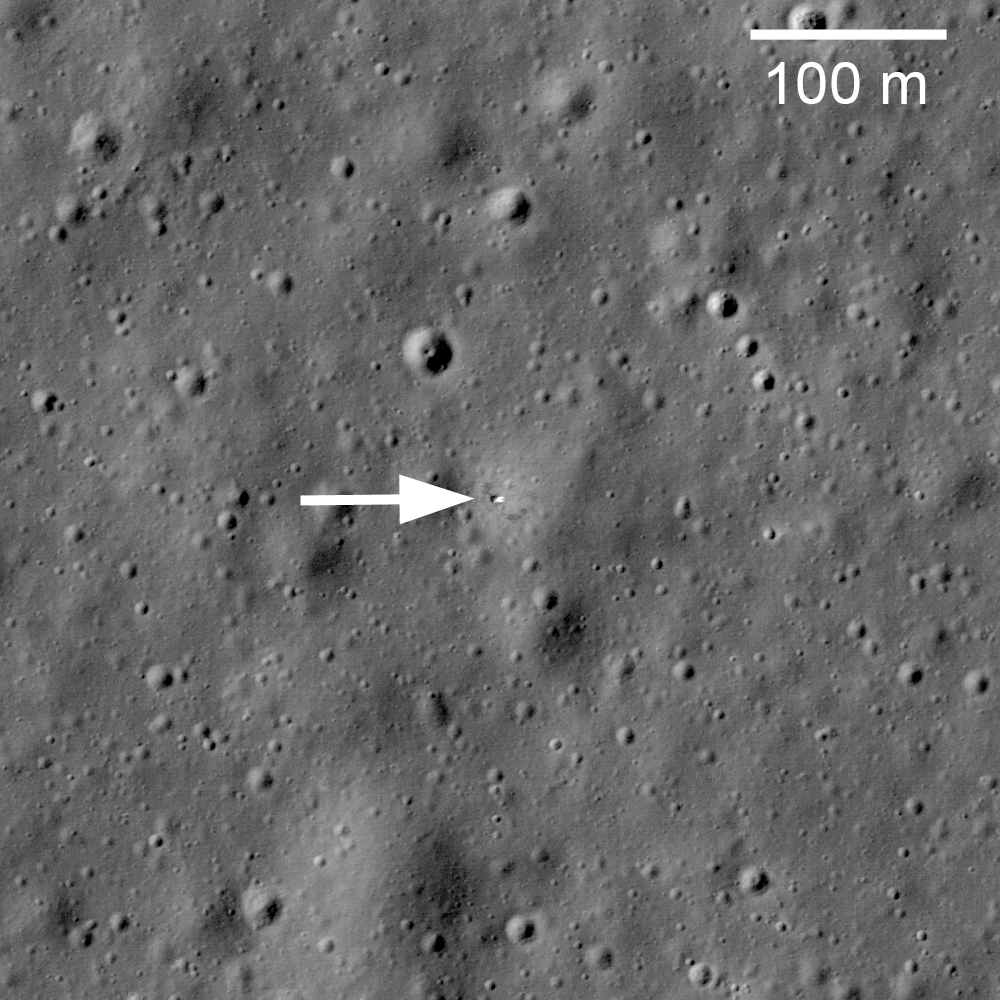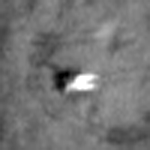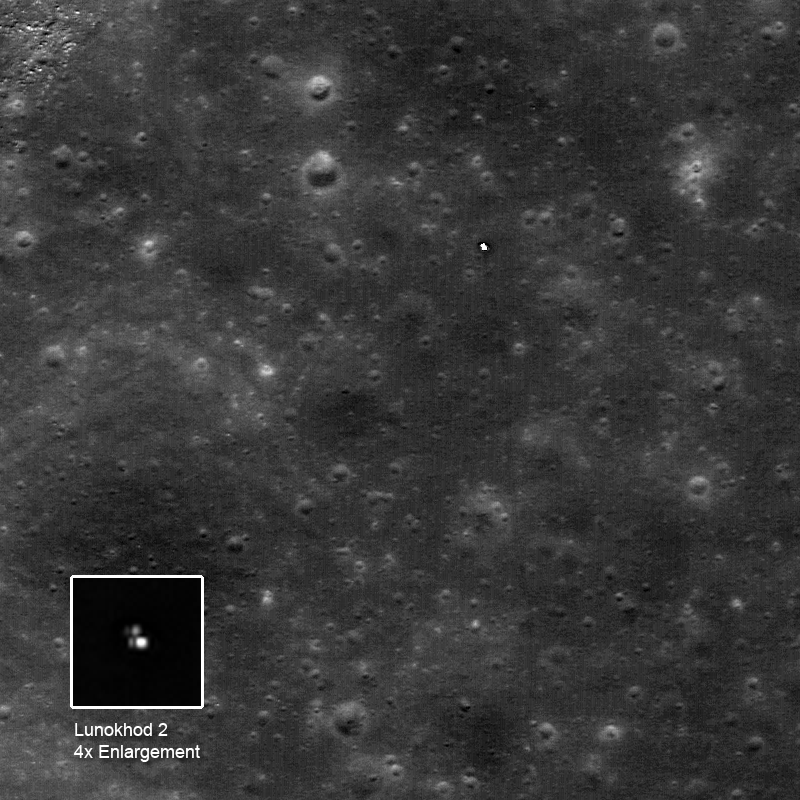
An amazing spacecraft gently settled to the lunar surface on 17 November 1970. It carried the first successful robotic lunar rover -- Lunokhod 1. For the next ten months the rover was driven by operators in the Soviet Union, with the total distance traveled exceeding 10 km. For comparison, in six years of operation the Mars Exploration Rover Opportunity has traveled about 12 km.
After landing, the rover drove down a ramp onto the lunar surface and tested its eight wheels. The rover was driven by solar power during the day; at night it parked and relied on thermal energy from a polonium-210 radioisotope heater to survive the cold (-150°C).
The intrepid rover sent back valuable data concerning the composition of the regolith (soil), close up views of the local topography, and important engineering measurements of the regolith. Examine the full
NAC image and trace out the path of Lunokhod 1.Recently the LROC Science Operations Center received an unexpected visitor - Ruslan Kuzmin. He was one of the scientists who had actually participated in the Lunokhod missions! We were able to show him LROC pictures of the hardware on the surface and he was gracious enough to write down some of his thoughts upon seeing his "old friends".
"Thank you very much for showing me the excellent LROC images of the Lander platform from “Luna-21”, as well as the robotic lunar rover “Lunokhod-2” in its last and eternal parking place after a 37-km, 4 month journey of research.
To see the images with Lunokhod-2 and its tracks on the lunar surface is a very special feeling for me. In the time of the Lunokhod-2 operation, I was a young planetologist who was participating in the mission, and I analyzed the images received by the rover’s TV- camers. In actual fact, this was the first successful mission in which I was involved. It was 37 years ago (in the last century!) when the Lunokhod-2 traveled for four months within the crater Le-Monier at the eastern edge of the Mare Serenitatis.
While looking at LROC images of the Lunokhod-2 rover, I felt a deep interior excitement due to the welled up memories of the earliest “pages” of my science career. It is very exciting that the Lunokhod-2, as well as many other American and Soviet Union Landers, which operated many tens of years ago, now might be imaged by LROC so clearly, and viewed by millions of people around the world. The LRO camera is without any doubt a really fantastic instrument that simultaneously brings our eyes close to the lunar surface, while reminding us of pioneering results from historical missions. P.S. In attachment I sent the fragment of the Lunokhod-2 panoramic image of the Fossa Recta - the last object of its research."
Find the Lunokhod 2 and its tracks in the full resolution map projected NAC image below.
Published by Mark Robinson on 17 March 2010




